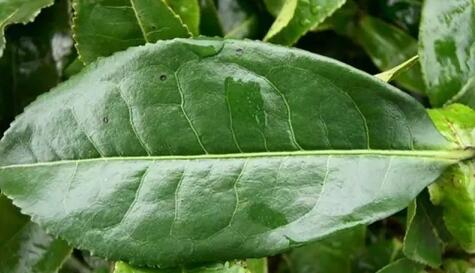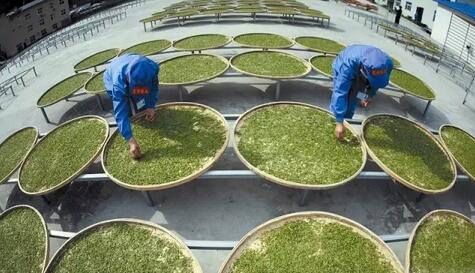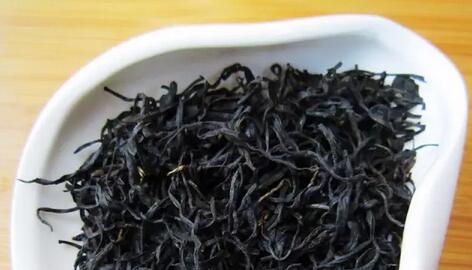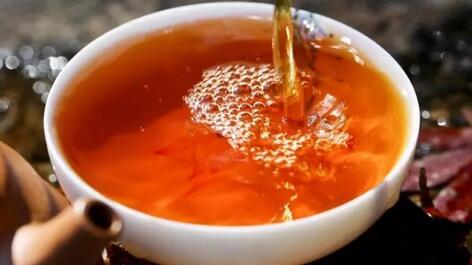Black tea is a fully fermented tea category, made from the buds and leaves of tea plants through typical processes like withering, rolling (or cutting), fermentation, and drying. It is named for the reddish hue of its dried leaves and brewed tea.
In cold winters, many people enjoy brewing a cup of rich black tea to drive away the chill, warming both body and stomach. However, China has a wide variety of black teas, and newcomers to tea might find themselves overwhelmed by the dazzling array of names, often ending up with teas that don't suit their tastes and exclaiming they've been "scammed." Sometimes, this isn't due to poor-quality tea leaves but rather not choosing the right tea for oneself.
Today, we'll take two classic examples of black tea—Dianhong and Keemun—and explore their differences.
1. Origin Differences

Keemun: Short for Keemun Black Tea, its original production area is Qimen County in Anhui Province, China (as recorded in Webster's Dictionary). Modern Keemun production areas have expanded to include Qimen, Dongzhi, Guichi (now Chizhou City), Shitai, and Yixian in Anhui, as well as Fuliang in Jiangxi. These regions boast excellent natural conditions, with abundant forests, warm and humid climates, deep soil layers, ample rainfall, and frequent fog, making them ideal for tea plant growth.
Dianhong: Short for Yunnan Black Tea, it originated in Fengqing County, Yunnan. Contemporary Dianhong production areas include the high mountain valleys west of the Lancang River and east of the Nujiang River in southwestern Yunnan, covering Fengqing County in Lincang, Menghai County in Xishuangbanna, Shuangjiang, and Changning County in Baoshan. The soil in these areas is primarily laterite and red soil, loose and rich in humus, giving the tea leaves abundant internal substances and resulting in high-quality Dianhong tea.

2. Historical Creation
Keemun: Developed by tea farmer Hu Yuanlong in Qimen, Anhui, who borrowed black tea production methods from other provinces around 1875 during the Guangxu era. Later, the tea was introduced to Beijing by the Tong Sheng Xiang Tea Shop, where it achieved market success, marking the beginning of Keemun's fame.
Dianhong: In 1937, Mr. Feng Shaoqiu and Mr. Zheng Hechun visited Yunnan to survey tea production and sales. They found that Fengshan in Fengqing County had ideal natural conditions for tea growth and began experimenting with black tea production. In 1939, Mr. Feng established the Shunning Tea Factory (now the Dianhong Group) in Fengqing, where the first batch of 500 dan (a unit of weight) of Dianhong was successfully produced. Following public opinion, Mr. Feng named it "Dianhong."
3. Raw Material Differences

Keemun: Keemun tea uses the local medium-leaf, mid-growth tea plant variety "Zhuye Zhong" (also called Qimen Zhong). The picking process is meticulous, selecting one bud with two or three leaves. Zhuye Zhong tea leaves are oval or elongated, soft in texture, rich in internal substances, and highly enzymatically active, making them perfect for producing Gongfu black tea.
Dianhong: Dianhong tea uses "Yunnan Large-leaf" tea plants. The leaves are elongated, oval, or nearly inverted lanceolate, mostly horizontally arranged, with pointed tips and dark green or yellow-green color, glossy, and with raised or significantly raised surfaces. The fresh leaves are rich in polyphenols and catechins.

4. Production Process Differences
Keemun: The production process is meticulous, selecting one bud with two or three leaves as raw material. It generally involves three main steps: picking, initial processing, and refining, including withering, rolling, fermentation, and drying. The process is strict and demanding to ensure quality.

Dianhong: Dianhong uses high-quality Yunnan large-leaf tea leaves, first undergoing withering, rolling or cutting, fermentation, and drying to produce finished tea. It is then further processed into Dianhong Gongfu tea or crushed into Dianhong broken tea. Depending on the type, the production methods include machine processing (for bagged broken tea and general loose tea) and handcrafting (for high-quality Dianhong).
5. Tea Quality Characteristics
Keemun Black Tea is a standout among black teas, renowned for its "high aroma, mellow taste, beautiful shape, and bright color," ranking first among the world's three most fragrant black teas. It has long enjoyed a high reputation among tea lovers and is considered "premium black tea" in international markets. Particularly in the UK, it is a favorite of the royal family, praised as "the finest of all" and "the queen of black tea."
Dianhong is divided into Gongfu tea (strip-shaped) and broken tea (granular). The former has a mellow taste, while the latter is strong and stimulating. Dianhong tea is rich in polyphenols, offering a robust and enduring flavor, remaining flavorful even after three brews.
To be precise, these two black teas each have their own highlights: Dianhong is stronger in taste, while Keemun stands out for its aroma.
1. Dry Tea

Keemun: The dry tea has tightly rolled, uniform strips with fine tips, golden buds, and a dark, glossy color (known as "precious light"). The aroma is rich, primarily honey and fruity, with top-grade Keemun exhibiting a slight orchid fragrance, long-lasting and unique—a signature "Keemun aroma" in the tea industry.

Dianhong: High-quality Dianhong dry tea is sturdy, bold, and plump, with a dark or reddish-brown color and visible fine hairs. The aroma is high, clear, and sweet, with prominent floral and fruity notes, strong but not overpowering, creating a refreshing sensation.
2. Tea Liquor

Keemun: The liquor is bright red with a thick golden ring. The taste is fresh, mellow, and lingering, retaining its aroma even when mixed with milk and sugar.

Dianhong: The liquor is bright red with a prominent golden ring. The aroma is fresh, the taste strong and stimulating, with a refreshing aftertaste and resilience. Even with milk, the tea flavor remains strong. High-quality Dianhong emits a signature honey aroma with sweet floral and fruity notes, presenting an orange-red transparency that is rich and enticing. Its overall style is robust, characteristic of large-leaf teas, and a slight acidity is normal.
3. Brewed Leaves

Keemun: The brewed leaves are bright red, tender, and soft.
Dianhong: The brewed leaves are plump, reddish, and glossy.

6. Relationship Between the Two Black Teas
Mr. Feng Shaoqiu, the founder of Dianhong, worked at the Qimen Tea Improvement Institute from 1935 to 1937. During this time, he made significant contributions to improving machine-made Keemun tea. He also broke the tradition of not using summer tea for Keemun production, creating a tea with excellent color and aroma that won the "top price" in Shanghai that year.
In 1937, Mr. Feng and Mr. Zheng surveyed Yunnan's tea production and found Fengshan in Fengqing County ideal for tea growth. In 1939, Mr. Feng established the Shunning Tea Factory (now Dianhong Group) in Fengqing, where the first batch of Dianhong was successfully produced and marketed.
Both Keemun and Dianhong are famous Chinese black teas, each with unique qualities and a wide fan base, especially in international markets. To find out which suits you best, try them yourself and experience their distinct characteristics.